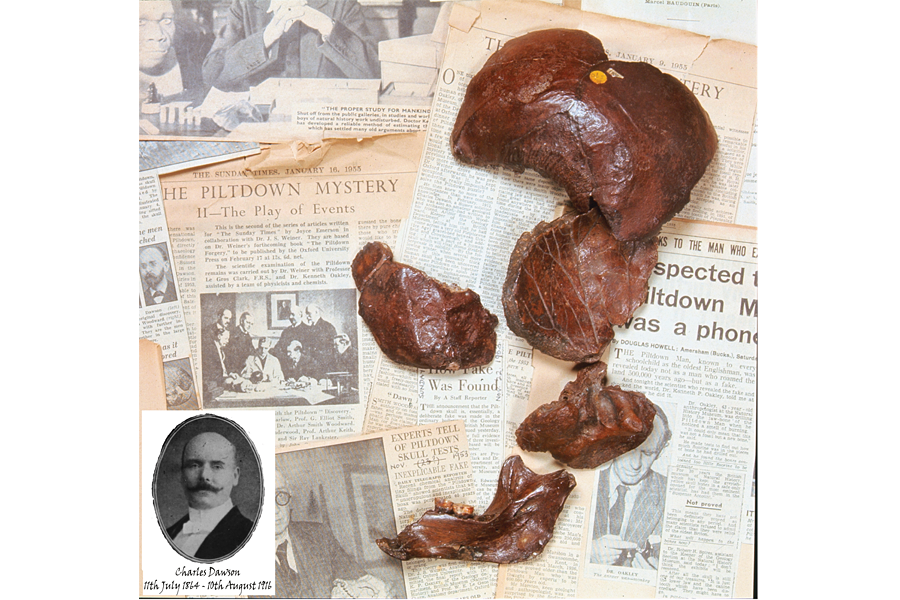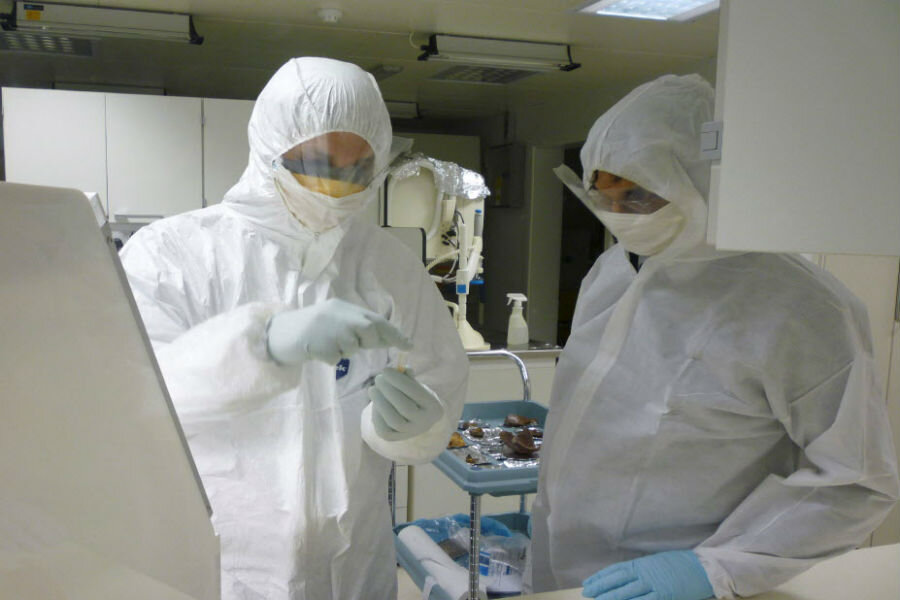Piltdown Man: Scientists finally get to the bottom of notorious scientific forgery
Loading...
Piltdown Man was heralded as the missing link, connecting humans to their ape ancestors. Discovered in England in 1912, the fossils were exactly what British paleontologists were hoping to find. Newspapers proclaimed: "Missing Link Found - Darwin's Theory Proved."
But the remains that traced early human ancestors back to England were eventually overtaken by doubts, and, in 1953, scientists concluded that Piltdown Man was an elaborate fraud, compiled of pieces of a human skull and orangutan jaw and teeth.
The next great mystery was determining who was responsible and how they did it. Only now, over a century later, scientists have definitively narrowed the blame down to just one person: Charles Dawson, an amateur archaeologist and fossil collector.
Mr. Dawson supposedly stumbled across the remains near Sussex, England. He told paleontologist Arthur Smith Woodward of the British Museum that he had found remains of early human ancestors to rival those discovered in Germany just a few years prior and the pair presented the findings to the Geological Society of London. Sir Smith Woodward and Dawson excavated the site for two more years, discovering more teeth that were between human and orangutan in size, and dated the specimen at about 500,000 years ago.
The British community was sold.
“The shocking thing was how many people accepted it because it fell right into their belief system,” David Begun, a paleoanthropologist professor at the University of Toronto, tells The Christian Science Monitor.
At the time, people thought the missing link between nonhuman apes and humans would have developed a large brain, but still have a relatively primitive jaw.
"The idea was that this was before cooking and utensils, so you still had to have a powerful jaw. But you still had to be smart enough to survive in the north, in England, so they had a large brain,” Dr. Begun explains. So “Dawson put together this fraudulent fossil to fit the preconceptions of the time."
At the height of imperialism, the discovery aligned with prejudices of the day. Anthropologists hadn't pinned down where humans first arose, so it was still possible to link them back to Europe.
Even more recent discoveries of human ancestors have immediately raised red flags because they upended people's expectations, including the enigmatic "hobbit" from Indonesia, and strange, small human ancestors in the Rising Star cave in South Africa. But those excavations were carefully documented and the specimens were verified as real.
In contrast, the greatest scientific fraud in history fit exactly what scientists were looking for.
"Everything that has been found recently has been a surprise and Piltdown was just perfectly matching expectations of the time," Begun says.
"I suspect there was a deep-rooted desire to find something really good in the UK by UK scientists because lots of amazing stuff had been found in France and Spain and elsewhere. So in some ways it helped put England on the map in terms of important fossil finds," Will Harcourt-Smith, a paleoanthropologist at Lehman College CUNY and the American Museum of Natural History, tells the Monitor.
Because it confirmed the biases of the time, the Piltdown Man closed people's eyes to the new things there were to discover – like real, more primitive remains that were discovered in South Africa in the 1920s and 1930s.
“Piltdown made the acceptance of the South African evidence more difficult. Their combination of brain size and dental morphology flew in the face of Piltdown. Certainly, it prevented scientists in England from looking dispassionately and objectively at the evidence in South Africa for a long time,” says Bernard Wood, professor of human origins at George Washington University.
But as more primitive remains were unearthed, Piltdown Man became more of a red herring, a side branch that didn't fit with other discoveries and was harder to justify. Scientists began to ask more questions and highlight the weirdness of Piltdown Man, but no one blatantly called it out as a fraud until new technology brought unmistakable proof.
The advent of high-powered microscopes in the 1950s made it possible for scientists to look up-close at the specimens, revealing that the ape teeth had been filed down to appear smaller. Fluorine testing made it possible to date the bones, and it turned out they weren't all the same age.
The spell was broken.
Now, more advanced tools, including DNA analysis, high-precision measurements, and spectroscopy give us a better understanding of how the forgery took place.
The teeth from both the original Piltdown site and the subsequent "discoveries" two miles away came from one orangutan. 3D x-ray imaging shows that the same putty was used to stain the surface of every bone and tooth associated with Piltdown Man, making it appear ancient, and to insert small pebbles into the bones, to make them heavier, like fossils. The methods behind the mischief are revealed in a paper published Wednesday in the journal Royal Society Open Science.
And it didn't take a team to pull off this famous fraud.
“Throughout the whole assemblage, there’s evidence of one hand, one maker, one signature,” Isabelle De Groote, lead author of the paper, told Science Magazine. And, she said, Dawson had the expertise to do it as well, having dabbled in small-time forgery before.
The rigorous scientific study confirms what circumstantial evidence had already suggested, that Dawson alone was behind the hoax. It clears other people whose names had been connected to the mystery, including Sherlock Holmes creator Sir Arthur Conan Doyle, who raised suspicion because he lived nearby, collected fossils, and even mused in his novel about how easy it would be to create a fake fossil.
"Dawson craved acceptance by the scientific establishment. He wasn’t as highly trained as some of the others so this was really a way to get him in the limelight," Dr. Harcourt-Smith says. "He wanted fame and fortune, he wanted to be a part of the elite of the British paleoanthropologists, and this was a way in."







